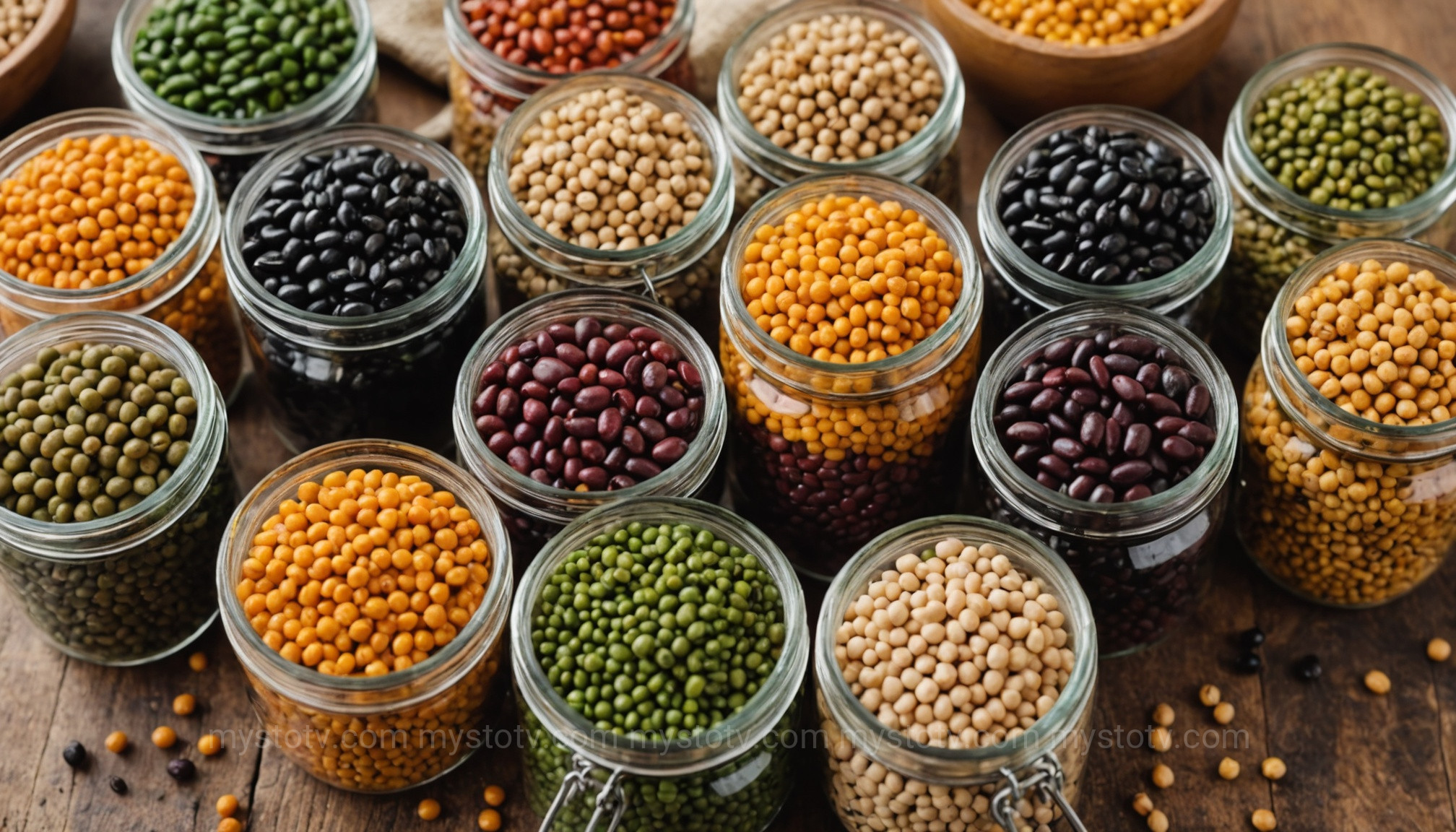As a nutritionist, I’ve seen countless clients walk in with a list of symptoms—bloating, fatigue, skin issues, and even low moods—all pointing back to one often-overlooked area: their gut. I remember one client, a busy professional, who was doing everything “right” but still felt awful. We shifted our focus away from restrictive dieting and towards nurturing her inner ecosystem. The change wasn't overnight, but by consistently incorporating specific foods that improve gut microbiome, she began to feel a profound difference. It wasn’t about a magic pill; it was about understanding that our gut is a garden, and we get to choose what we plant. This article shares the very same advice I give in my practice, focusing on the most effective foods that improve gut microbiome and how to make them a seamless part of your life.
Contents
Why Your Gut Microbiome Health Is Crucial for Overall Wellness

Before we dive into the list, it's essential to understand *why* this topic matters so much. Your gut microbiome is a complex community of trillions of microorganisms, including bacteria, viruses, and fungi, living in your digestive tract. Think of it as a bustling city inside you. When this city is balanced and thriving, it does more than just digest food. A healthy gut microbiome is linked to a stronger immune system, better mood regulation (thanks to the gut-brain axis), reduced inflammation, and even a lower risk of chronic diseases. Conversely, an imbalance, known as dysbiosis, can contribute to everything from irritable bowel syndrome (IBS) to anxiety and autoimmune conditions. Therefore, choosing foods that improve gut microbiome isn't just about digestion; it's a foundational strategy for long-term health.
The Pillars of Eating: Core Foods That Improve Gut Microbiome
Nourishing your gut doesn't have to be complicated. The strategy boils down to a few key principles. In my practice, I focus on three main categories of gut-friendly components found in food: probiotics, prebiotics, and polyphenols. Understanding these will empower you to make informed choices beyond just the top 10 list.
Probiotics: The Friendly Reinforcements
Probiotics are live beneficial bacteria that, when consumed in adequate amounts, confer a health benefit. They are like sending in reinforcements to bolster your gut's population of good microbes. These are most famously found in fermented foods, where the fermentation process allows these beneficial cultures to flourish. Consuming these foods directly populates your gut with helpful bacteria like Lactobacillus and Bifidobacterium, which can help crowd out less desirable microbes.
Prebiotics: The Essential Fuel
If probiotics are the seeds, prebiotics are the fertilizer. Prebiotics are types of dietary fiber that your body cannot digest. Instead, they travel to your lower digestive tract, where they become a food source for the good bacteria living there. When your gut bacteria feast on prebiotic fiber, they produce beneficial compounds called short-chain fatty acids (SCFAs), such as butyrate. These SCFAs are metabolic powerhouses; they provide energy for your colon cells, strengthen the gut barrier, and reduce inflammation throughout the body. This is a critical mechanism by which certain foods improve gut microbiome health from within.
Polyphenols: The Antioxidant Protectors
Polyphenols are plant compounds that act as antioxidants, protecting your body from damage. What’s fascinating is that only about 5-10% of polyphenols are absorbed in the small intestine. The rest make their way to the large intestine, where they are metabolized by your gut bacteria. This interaction is a two-way street: gut microbes transform polyphenols into more readily absorbable, bioactive compounds, and in return, these polyphenols promote the growth of beneficial bacteria and inhibit the growth of pathogenic ones. This synergistic relationship highlights the sophistication of a diet rich in plant-based foods.
Top 10 Foods That Improve Gut Microbiome, According to a Nutritionist
Now, let's get to the practical list. These are the top 10 foods I consistently recommend to my clients to support their digestive wellness and overall health. The key here is diversity and consistency. Try to incorporate a variety of these foods into your diet each week.
1. Yogurt & Kefir

Yogurt and kefir are arguably the most well-known probiotic powerhouses. They are fermented dairy products that contain live, beneficial bacterial cultures. Kefir, in particular, is often a superior choice as it typically contains a wider variety and a higher number of probiotic strains than yogurt. When choosing yogurt, look for labels that state “live and active cultures” and opt for plain, unsweetened versions to avoid added sugars that can feed less desirable gut microbes.
Analytical Insight: The direct introduction of live cultures from yogurt and kefir offers a fast-track method to increase microbial diversity. It's an active intervention, as opposed to simply feeding existing bacteria. This is particularly beneficial after a course of antibiotics, which can deplete gut flora.
2. Kimchi & Sauerkraut
These tangy, fermented cabbage dishes are staples in Korean and German cuisine, respectively, and are fantastic non-dairy sources of probiotics. The fermentation process not only creates beneficial bacteria but also makes the nutrients in the cabbage more bioavailable. Kimchi often has an edge due to the inclusion of other gut-friendly ingredients like garlic, ginger, and scallions. When buying, choose refrigerated varieties found in the chilled section of the store, as shelf-stable versions are often pasteurized, which kills the live cultures.
3. Onions, Garlic & Leeks
This trio from the allium family is a superb source of prebiotic fiber, specifically inulin and fructooligosaccharides (FOS). These fibers are indigestible by us but are a gourmet meal for our beneficial gut bacteria, particularly Bifidobacteria. By feeding these microbes, you encourage them to multiply and produce health-promoting SCFAs. The beauty of these ingredients is their versatility; they form the flavor base of countless savory dishes, making them easy to incorporate daily.
4. Lentils & Legumes

Lentils, chickpeas, beans, and peas are nutritional champions. They are loaded with plant-based protein and, critically for gut health, an abundance of fiber and resistant starch. Resistant starch functions similarly to prebiotic fiber, resisting digestion in the small intestine and fermenting in the large intestine. This fermentation process fuels colon cells and supports a balanced microbial community. Starting with small portions can help your digestive system adapt if you're not used to a high-fiber diet. Learn more about these gut-friendly pillars!
5. Asparagus
Asparagus is another excellent prebiotic food. It's particularly rich in inulin, a type of soluble fiber that nourishes beneficial bacteria like Lactobacilli and Bifidobacteria. Beyond its prebiotic content, asparagus also contains a wealth of vitamins and antioxidants, making it a fantastic addition to any meal. Roasting it with a bit of olive oil and garlic is a simple and delicious way to enjoy its benefits.
6. Berries
Raspberries, blueberries, and strawberries are not only delicious but are also fantastic for your gut. They are packed with fiber and potent antioxidant polyphenols called anthocyanins, which give them their vibrant colors. Gut bacteria metabolize these polyphenols, which can help increase the abundance of beneficial microbes. For its impressive fiber content, the raspberry is a particular star—one cup contains about 8 grams of fiber.
7. Apples
An apple a day might just keep the gut doctor away. Apples are a great source of pectin, a type of soluble fiber that acts as a prebiotic. Pectin increases butyrate, the primary fuel source for your colon cells, and helps promote a healthy gut lining. The polyphenols found in the apple's skin also play a role, so be sure to eat the whole fruit for maximum benefit.
8. Whole Grains (Oats & Barley)
Whole grains like oats and barley are rich in a specific type of fiber called beta-glucan. Beta-glucan has been shown to have both prebiotic effects and to promote lower cholesterol levels. It ferments in the gut to produce SCFAs, contributing to a healthier microbial environment. A bowl of oatmeal for breakfast or adding barley to soups and stews are easy ways to get these beneficial fibers into your diet.
Analytical Insight: The combination of different fiber types, like beta-glucan from oats and pectin from apples, feeds different types of bacteria. This highlights why dietary diversity is paramount; a varied menu of fibers ensures a more robust and resilient microbial ecosystem.
9. Dark Chocolate & Cocoa
This might be the best news of the day. Dark chocolate, specifically the cocoa it contains, is a rich source of polyphenols and fiber. In the gut, microbes ferment the cocoa, leading to the growth of anti-inflammatory bacteria. This process also breaks down the large polyphenol molecules into smaller, more easily absorbed antioxidant compounds. For the greatest benefit, choose dark chocolate with a high cocoa content (70% or more) and minimal added sugar.
10. Extra Virgin Olive Oil
Extra Virgin Olive Oil (EVOO) is more than just a healthy fat; it's a source of gut-friendly polyphenols. Studies have shown that the polyphenols in EVOO can reduce inflammation in the gut and may inhibit the growth of pathogenic bacteria while stimulating the growth of beneficial Bifidobacteria and Lactobacillus. It's a cornerstone of the Mediterranean diet, which is consistently linked to better health outcomes and a diverse microbiome.
Frequently Asked Questions
1. How long does it take to see improvements in gut health from diet?
While some changes in the gut microbiome can occur within a few days of dietary shifts, more significant and stable improvements often take time. In my experience, clients typically start to notice positive changes in symptoms like bloating and regularity within 2 to 4 weeks of consistent effort. However, building a resilient and diverse gut ecosystem is a long-term project. Consistency is more important than perfection.
2. Can I just take a probiotic supplement instead of eating these foods?
Supplements can be a useful tool, especially in specific situations like after antibiotic use. However, I always advocate for a "food-first" approach. Whole foods offer a complex matrix of fiber, prebiotics, polyphenols, vitamins, and minerals that work synergistically—something a pill cannot replicate. Use supplements as a targeted boost, not a replacement for a healthy diet rich in the foods that improve gut microbiome.
3. What are the worst foods for the gut microbiome?
Just as some foods nurture your gut, others can harm it. A diet high in ultra-processed foods, artificial sweeteners (like aspartame and sucralose), and excessive sugar can promote the growth of inflammatory bacteria and reduce microbial diversity. While occasional indulgence is fine, a diet consistently based on these items can disrupt the delicate balance of your gut flora.
References
- Valdes, A. M., Walter, J., Segal, E., & Spector, T. D. (2018). Role of the gut microbiota in nutrition and health. BMJ, 361, k2179. https://www.bmj.com/content/361/bmj.k2179
- Singh, R. K., Chang, H. W., Yan, D., Lee, K. M., Ucmak, D., Wong, K., Abrouk, M., Farahnik, B., Nakamura, M., Zhu, T. H., Bhutani, T., & Liao, W. (2017). Influence of diet on the gut microbiome and implications for human health. Journal of Translational Medicine, 15(1), 73. https://doi.org/10.1186/s12967-017-1175-y
- Holscher, H. D. (2017). Dietary fiber and prebiotics and the gastrointestinal microbiota. Gut Microbes, 8(2), 172–184.
Conclusion: Nurturing Your Inner Garden for Lasting Health
Improving your gut health is one of the most impactful steps you can take for your overall well-being. By focusing on incorporating a diverse range of these top 10 foods that improve gut microbiome, you are actively cultivating a healthier, more resilient internal ecosystem. Remember, this isn't about a restrictive diet but rather a philosophy of adding nourishment. Start small, be consistent, and listen to your body. By feeding your gut well, you're not just supporting digestion; you're investing in a healthier brain, a stronger immune system, and a more vibrant life.